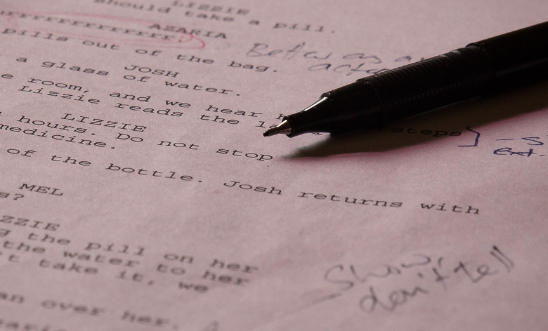Workflow During A Story Consultation
Happy New Year! Yesterday I spoke with a director who was curious about collaborating with me on a story consultation. Like many directors, she asked me, “How does that work?”
Usually, they’ve already read my Services webpage, which describes benefits and outcomes. But directors also want to understand the workflow.
So, here’s an overview that describes consultations aimed at directors in post-production. (A future newsletter will describe pre-production and production consultations.)
To begin, a director (or editor) will send us a low-resolution Quicktime file of their cut. If the director has chosen the “Written Notes” option, I’ll also request a transcript of the cut, which they can get made at one of these transcription sites.
Having a transcript makes it easier: for me to make time-code specific recommendations; and for editors, to incorporate them.
I’ll also ask directors to put into writing any specific questions or concerns. For example, they might ask, “What do you think of the opening montage?” Or, “How can we make this essay doc more emotional?” Or, “Is sequence X clear?”
Then, I’ll watch the cut the first time to get a general impression of the existing structure, as well as an all-important emotional hit. Is the cut moving me? Keeping me interested?
If directors have asked for the optional “Video Notes”, I’ll employ a special software on the first watch. This useful tool allows me to record both the cut playing on my desktop, as well as me watching the cut and making comments scene-by-scene.
The Video Notes give visceral, “live” viewer feedback. Directors see and hear precisely when I am surprised, perplexed, humored, touched, or downright bored.
On my second viewing, if directors want Written Story & Script Notes, I’ll proceed slowly with transcript in hand. I make sure to note what’s working, so directors don’t try to fix what’s not broken.
I’ll also encounter several editorial problems and suggest solutions, ranging from structure to pacing to style. See the extensive list of tasks (for Initial and Follow up Story Consultation) at the bottom of this page.
If needed, I’ll watch the cut a third time to answer any specific questions and write additional Story Notes.
Next, we discuss my feedback on a recorded conference call. Sometimes the director invites an editor, or producer to join us. We’ll mainly focus on remaining issues that I can’t solve myself because it takes more than one mind to find the best way forward.
These calls are fun! Imagine your most interesting idea-centered discussions, perhaps on previous films or even during your college days. Generating new ideas to solve problems, we brainstorm our way to making a better film.
Deliverables always include the recorded call. Written Story Notes, as well as Video Notes, are optional. With clear, actionable recommendations in hand, the editor is ready to make big leaps forward on the next cut. Read what directors and editors are saying about this process here.
Many directors opt for a follow-up consultation, which is discounted by thirty percent. Email me for a free 20-minute consultation.
(If you’re looking for an editor trained in documentary storytelling, click here to learn how we edit remotely.)
